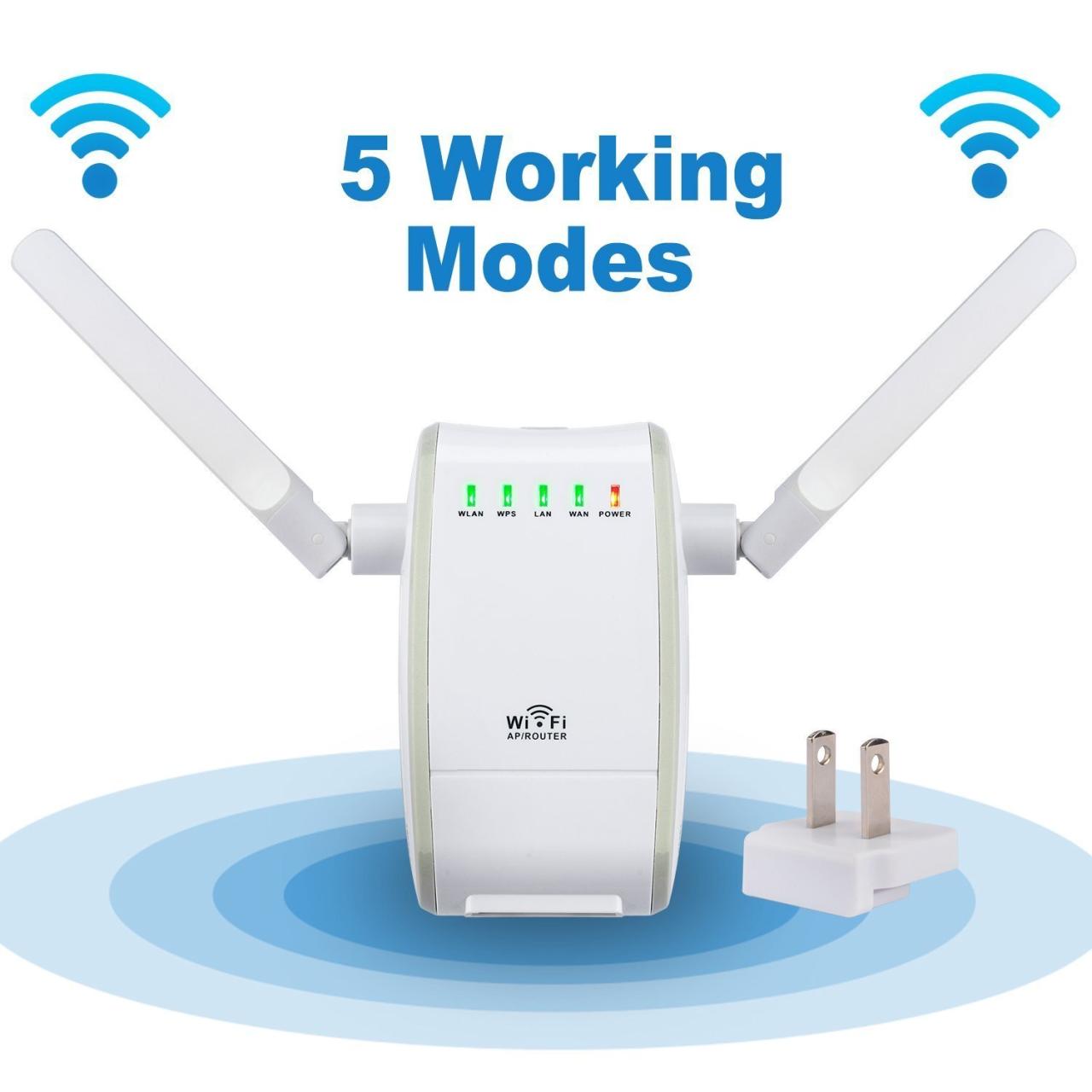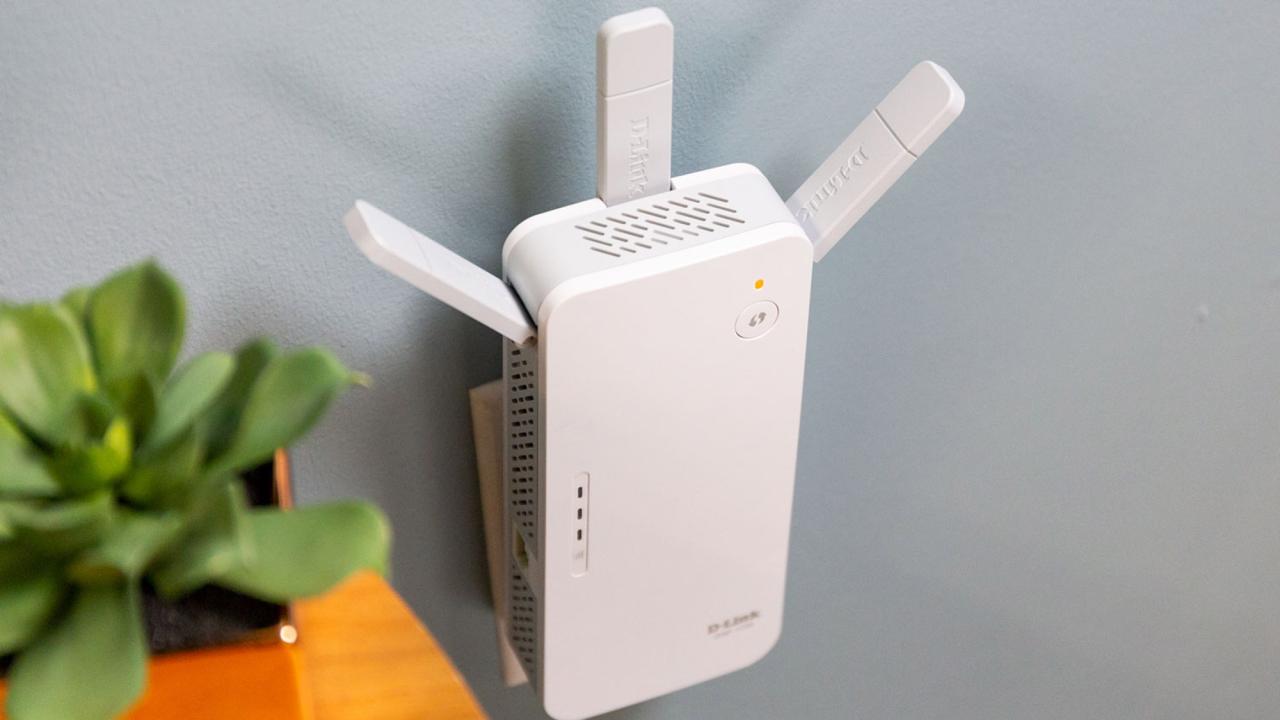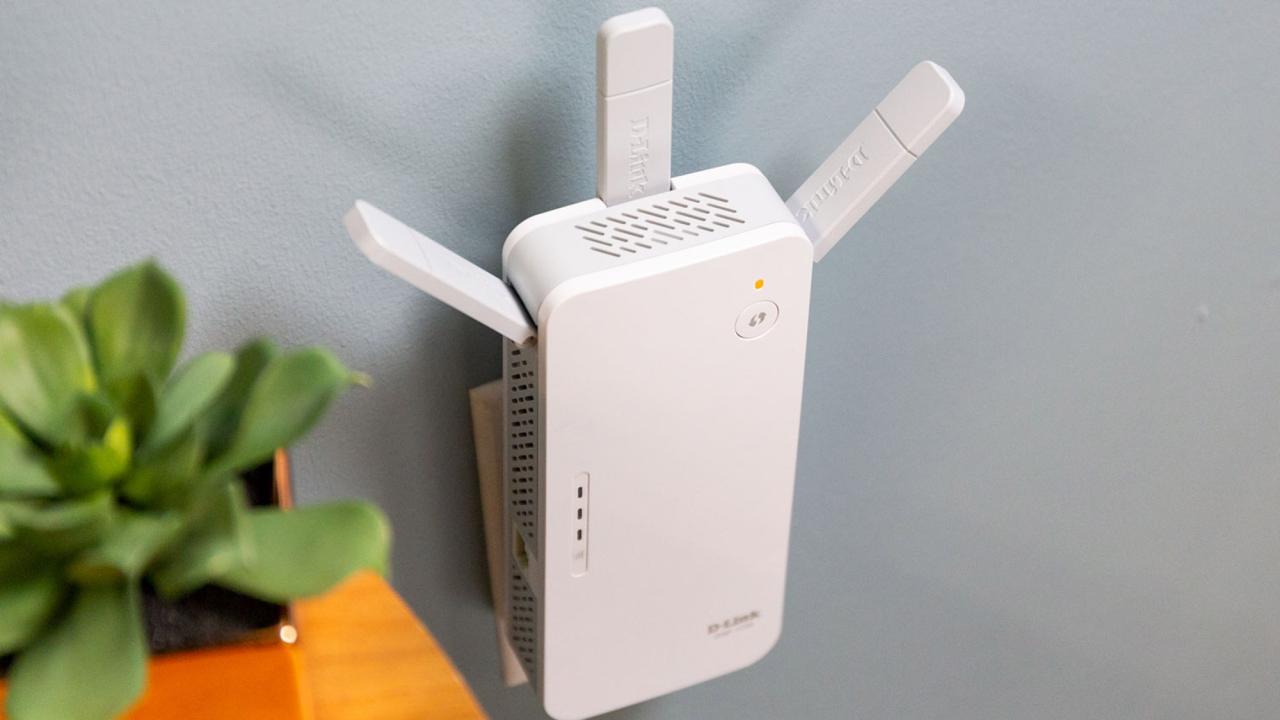Amplificateur wifi, or Wi-Fi extender in English, is your solution for weak wireless signals. Imagine seamless streaming throughout your home, even in those notoriously dead zones. This guide dives into the world of Wi-Fi amplification, exploring different types of extenders, installation tips, and troubleshooting common issues. We’ll cover everything from choosing the right device for your needs to optimizing its placement for maximum coverage and security.
From understanding the technical aspects of signal amplification and the differences between 2.4GHz and 5GHz bands, to selecting the best extender based on your home’s size and number of devices, we’ll equip you with the knowledge to conquer weak Wi-Fi once and for all. We’ll also address security concerns and how to keep your network safe.
Understanding Wifi Amplifiers
A wifi amplifier, also known as a wifi extender or repeater, boosts your existing wifi signal to reach areas where it’s weak or unavailable. This allows you to enjoy reliable internet access throughout your home or office. Understanding the different types and how they work is key to choosing the right one for your needs.
Wifi Amplifier Functions
Wifi amplifiers work by receiving your router’s wifi signal, amplifying it, and rebroadcasting it. This extends the range of your network, eliminating dead zones and improving signal strength in areas further from your router. They are crucial for larger homes, multi-story buildings, or areas with significant signal interference.
Types of Wifi Amplifiers
Several types of wifi amplifiers are available, each with its own strengths and weaknesses. The most common include wifi extenders, powerline adapters, and mesh wifi systems.
Mesh Wifi Systems vs. Traditional Wifi Extenders
Mesh wifi systems use multiple nodes to create a seamless wifi network across your home. Each node communicates with the others to provide consistent coverage. Traditional wifi extenders, on the other hand, simply extend the range of your existing router. Mesh systems generally offer better performance and easier management, but they are also more expensive.
Installing a Wifi Amplifier
Installing a typical wifi amplifier is a straightforward process. The steps generally involve plugging the amplifier into a power outlet, connecting it to your existing wifi network, and then optionally configuring the amplifier’s settings.
- Plug the amplifier into a power outlet within range of your router.
- Connect to the amplifier’s network using your device.
- Follow the on-screen instructions to connect the amplifier to your existing wifi network.
- Optionally configure settings like the amplifier’s name and password.
Comparison of Wifi Amplifier Brands
Choosing the right brand depends on your budget and specific needs. Here’s a comparison of three popular brands:
| Feature | Brand A | Brand B | Brand C |
|---|---|---|---|
| Speed | Up to 1Gbps | Up to 2Gbps | Up to 1.7Gbps |
| Range | Up to 1500 sq ft | Up to 2000 sq ft | Up to 1800 sq ft |
| Number of Devices | Up to 20 | Up to 30 | Up to 25 |
| Price | $50 | $75 | $60 |
Technical Aspects of Wifi Amplification
Understanding the technical aspects of wifi amplification helps in optimizing performance and troubleshooting issues. Factors like frequency bands and signal interference play a significant role.
Wifi Signal Amplification Principles, Amplificateur wifi
Wifi signal amplification involves receiving a weak wifi signal, boosting its power, and retransmitting it. This is typically achieved using specialized hardware and software within the amplifier. The process involves signal reception, amplification, and retransmission, each stage impacting the overall performance.
Impact of Frequency Bands

2.4GHz and 5GHz are the common frequency bands used for wifi. 2.4GHz offers better range but slower speeds, while 5GHz offers faster speeds but shorter range. The choice of frequency band impacts the amplifier’s performance, particularly in terms of speed and range. A dual-band amplifier supporting both frequencies offers the best flexibility.
Causes of Poor Wifi Signal Amplification and Solutions
Several factors can lead to poor wifi signal amplification. These include physical obstructions (walls, furniture), interference from other devices (microwaves, cordless phones), and poor amplifier placement.
- Problem: Weak signal due to distance from router.
- Solution: Relocate the amplifier closer to the router or use a more powerful amplifier.
- Problem: Interference from other devices.
- Solution: Change the wifi channel or relocate the amplifier away from interfering devices.
Optimizing Wifi Amplifier Placement
Strategic placement of the wifi amplifier is crucial for maximizing coverage. Avoid placing it behind walls or other obstructions. An ideal location is centrally located and elevated, minimizing signal interference and maximizing range.
Ideal Wifi Amplifier Placement Diagram
Imagine a two-story house. The router is located centrally on the ground floor. An ideal placement for an amplifier would be on the second floor, centrally located and away from metallic objects or thick walls. This ensures good signal reach to both floors. A second amplifier could be placed in a far corner of the ground floor to extend coverage to the furthest points of the house.
Choosing the Right Wifi Amplifier
Selecting the appropriate wifi amplifier involves considering several factors. Understanding the differences between various technologies and features ensures an optimal choice for your specific needs.
Performance of Different Wifi Amplifier Technologies
Powerline adapters use your home’s electrical wiring to transmit data, while repeaters use wifi signals. Repeaters are generally easier to set up but may reduce speed, whereas powerline adapters can offer better stability but may be affected by electrical noise.
Factors to Consider When Choosing a Wifi Amplifier
The size of your home or office, the number of devices connected to your network, and your budget all influence your amplifier choice. Consider the required coverage area, data throughput needs, and the number of simultaneous users.
A strong Wi-Fi signal is crucial for smooth drone operation, so grabbing a good amplificateur wifi is a smart move. This is especially important if you’re considering a more advanced model, like those discussed in this helpful guide on which DJI drone to buy , as they often demand more bandwidth. Once you’ve chosen your drone, a reliable amplificateur wifi will ensure you get the best possible range and video quality.
Features to Look for When Purchasing a Wifi Amplifier
Look for features like dual-band support (2.4GHz and 5GHz), good range, multiple antennas, and easy setup. Consider features like MU-MIMO (Multi-User Multiple Input Multiple Output) for improved performance with multiple devices.
Pros and Cons of Different Wifi Amplifier Types

- Wifi Extenders:
- Pros: Easy to set up, relatively inexpensive.
- Cons: Can reduce overall network speed, susceptible to interference.
- Mesh Wifi Systems:
- Pros: Seamless coverage, consistent performance.
- Cons: More expensive than extenders, requires multiple units.
- Powerline Adapters:
- Pros: Can reach areas inaccessible to wifi, good stability.
- Cons: Can be affected by electrical noise, may require specific wiring.
Decision Tree for Selecting a Wifi Amplifier
A decision tree would start by asking about the size of the area needing coverage. If small, a simple extender might suffice. If large, a mesh system would be recommended. If electrical wiring is a concern, powerline adapters should be considered. The number of devices and budget also play a crucial role in the decision.
Troubleshooting Wifi Amplifier Issues
Despite careful selection and installation, issues may arise. Knowing how to troubleshoot these problems is essential for maintaining a stable wifi network.
Common Wifi Amplifier Problems and Solutions
Common issues include slow speeds, connectivity problems, and interference. These often stem from poor placement, signal interference, or incorrect configuration.
- Problem: Slow internet speeds.
- Solution: Check for interference, improve amplifier placement, or upgrade to a faster amplifier.
- Problem: Intermittent connectivity.
- Solution: Check the amplifier’s connection to the router and power source, relocate the amplifier, or check for interference.
Troubleshooting Slow Internet Speeds
Slow speeds can be caused by interference, distance from the router, or a weak amplifier signal. Try changing the wifi channel, improving the amplifier’s placement, or restarting the router and amplifier.
Resolving Connectivity Issues Related to Wifi Amplifier Placement
Poor placement leads to weak signals and connectivity issues. Experiment with different locations, ensuring a clear line of sight between the amplifier and the router, and avoiding obstructions.
Optimizing Amplifier Performance in Areas with Interference
Interference from other devices can significantly impact performance. Change the wifi channel, relocate the amplifier away from interfering devices, or use a wifi analyzer to identify the best channel.
Configuring a Wifi Amplifier on Different Operating Systems
- Windows: Connect to the amplifier’s wifi network, open a web browser, and enter the amplifier’s IP address. Follow the on-screen instructions to configure the settings.
- macOS: Similar to Windows, connect to the amplifier’s wifi network, open a web browser, and enter the amplifier’s IP address. Follow the on-screen instructions.
- Android: The process typically involves using the amplifier’s app, available on the Google Play Store. Follow the app’s instructions to configure the settings.
- iOS: Similar to Android, use the amplifier’s app available on the App Store. Follow the app’s instructions.
Security Considerations for Wifi Amplifiers
Security is paramount when using wifi amplifiers. Taking proactive steps ensures a secure network and protects your data from unauthorized access.
Security Implications of Using Wifi Amplifiers
Using wifi amplifiers introduces additional vulnerabilities if not properly secured. Improperly configured amplifiers can create security loopholes, making your network vulnerable to attacks.
Importance of Strong Passwords and Encryption
Strong, unique passwords and robust encryption protocols (WPA2/WPA3) are essential for securing your wifi network. Avoid using easily guessable passwords and regularly update your passwords.
Securing Your Wifi Amplifier Against Unauthorized Access
Enable strong encryption, use a strong password, and regularly update the amplifier’s firmware. Disable WPS (Wi-Fi Protected Setup) unless absolutely necessary.
Security Best Practices for a Safe Wifi Network
- Use a strong, unique password for your wifi network and amplifier.
- Enable WPA2/WPA3 encryption.
- Regularly update your router and amplifier’s firmware.
- Disable WPS (Wi-Fi Protected Setup) unless needed.
- Consider using a VPN for enhanced security.
Impact of Different Security Protocols
WPA2 and WPA3 are the most common security protocols. WPA3 offers enhanced security features compared to WPA2, making it a more secure choice. Using the latest encryption protocol is recommended for optimal security.
Conclusion: Amplificateur Wifi

Extending your Wi-Fi network doesn’t have to be a daunting task. By understanding the various types of amplifiers, their functionalities, and troubleshooting techniques, you can easily boost your Wi-Fi signal and enjoy a consistently strong connection. Remember to consider your specific needs when selecting an amplifier and prioritize security measures to protect your network. With the right knowledge and a little planning, you can say goodbye to frustrating dead zones and hello to a seamless Wi-Fi experience.
So you’re looking at wifi extenders, or “amplificateur wifi” as they say in French? A strong signal is crucial, especially for things that need reliable connectivity, like controlling devices remotely. For example, think about the range needed for a reliable drone remote start system; you wouldn’t want to lose control mid-flight! Getting a good wifi extender can significantly improve your range and connection stability for all your remote-controlled tech.
FAQ Insights
What’s the difference between a Wi-Fi extender and a mesh Wi-Fi system?
So you’re looking to boost your Wi-Fi signal with an amplificateur wifi? That’s great for getting a strong connection, especially if you’re flying drones! Speaking of which, check out these awesome drone deals before you upgrade your home network. A strong Wi-Fi signal is key for smooth drone operation, so make sure your amplificateur wifi is up to the task.
A Wi-Fi extender simply repeats your existing signal, potentially reducing speed. A mesh system uses multiple units to create a single, unified network for better coverage and performance.
How far can a Wi-Fi amplifier extend my signal?
The range depends on the amplifier’s power and the environment. Obstacles like walls and furniture significantly impact range. Expect anywhere from a few dozen to several hundred feet, depending on the amplifier and its surroundings.
Will using a Wi-Fi amplifier slow down my internet speed?
Yes, it can, especially extenders that just repeat the signal. Mesh systems generally handle this better. Placement is crucial; poor placement can significantly reduce speeds.
Can I use a Wi-Fi amplifier with my existing router?
Yes, most Wi-Fi amplifiers are designed to work with existing routers. You’ll need to connect the amplifier to your router’s network, either wirelessly or via an Ethernet cable.
